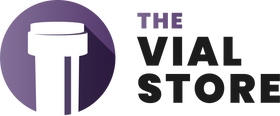The practice of pharmacy has evolved enormously over the last 150 years, from the discovery of antibiotics and the development of antiviral drugs to the replacement of glass with plastic in prescription bottles and much more.
- Chloroform was used as an anesthetic from 1847, and in 1869, chloral hydrate was introduced as a sedative and treatment for sleeplessness.
- In 1886, Atlanta pharmacist Dr John Stith Pemberton created a health syrup that was sold in a local pharmacy. It was very popular among consumers and was combined with carbonated water for sale by the glass as a brain and nerve tonic as it was great for alleviating headaches. This drink was the original version of Coca Cola. Its secret formula included caffeine, cocaine (which was removed from the recipe in 1903), caramel, sugar, vanilla, citric acid, and more.
- In 1892, salicylic acid (aspirin) was synthesized for commercial sale by German pharmacist Felix Hoffmann. It became, and remains, the most widely used drug worldwide.
- Pharmacists required graduation from a two year (minimum) specialized course in the State of New York from 1905 – qualifications which increased the professionalism of pharmacists. By 1932, this had been expanded to a four-year degree, and five years in 1954.
- The first effective syphilis treatment was discovered by Paul Ehrlich in 1907. Called arsphenamine, the discovery won Ehrlich the Nobel Prize in 1908.
- From 1914, laws were passed in the USA requiring that only registered, licensed pharmacists and prescribing physicians could import addictive substances including cocaine and opium.
- Women’s role in pharmacy was recognized in 1921 with the establishment of Kappa Epsilon, the first pharmacy sorority. Today, Kappa Epsilon accepts all pharmacists regardless of their gender.
- The hormone insulin, a diabetes treatment, was introduced for commercial sale in 1923. Before this, researchers proved that the drug lowered blood glucose levels in dogs.
- Penicillin was discovered by Scottish researcher Alexander Fleming in 1928 during his experiments with the influenza virus. He accidentally discovered that mould prevented the growth of the bacteria staphylococcus. This discovery revolutionized the treatment of many previously fatal diseases. Penicillin was developed into a medicinal form in 1940 by scientists at Oxford University in England and it remains the world’s most widely-used antibiotic.
- In 1938, the US Congress passed a law requiring all new drugs to be stringently tested for safety by the FDA before their sale.
- Scientists at Rutgers University, New Jersey, discovered streptomycin in 1944. It was the world’s first antibiotic to be derived from a form of life other than bacteria or fungi.
- The role of pharmacists began to change after World War II, with a focus on the formulation, storage, correct dosing, accurate dispensary and quality of drugs, and the provision of expert information and advice to patients and prescribing physicians.
- The earliest anti-cancer (chemotherapy) drug, methotrexate (which is still used) was developed in 1948 at Lederle Laboratories.
- 1950 saw the first diuretic drug approved for use to treat hypertension.
- One of the most significant pharmaceutical advances occurred in 1955, when Dr Jonas Salk created the polio vaccine injection, saving countless lives. The prevention of polio was further improved in 1961 with Albert Sabin’s oral polio vaccine.
- US Medicaid and Medicare programs were founded in 1965.
- Patients with heart and blood pressure problems began to be treated with beta-blockers in 1967.
- The first Hepatitis B vaccine was introduced in 1982, and in 1984, Retrovir was approved as the first proven effective medicine for HIV and AIDS.
- As of 2021, cannabis is legal for medicinal use (with some conditions) in all but two US states (Idaho and Nebraska) and for recreational use in 14 US states.
The pharmaceutical industry is thriving like never before, with research and development at its core. We have never had so much access to life-saving drugs as we do now, and the internet has revolutionized the supply and sourcing of medicines and the operation of pharmacies.
As a pharmacist or retailer, you need the right pharmacy packaging supplies, from dispensary mylar bags to prescription vials, pill bottles, and joint tubes in bulk. Visit The Vial Store for the best products and prices online.

